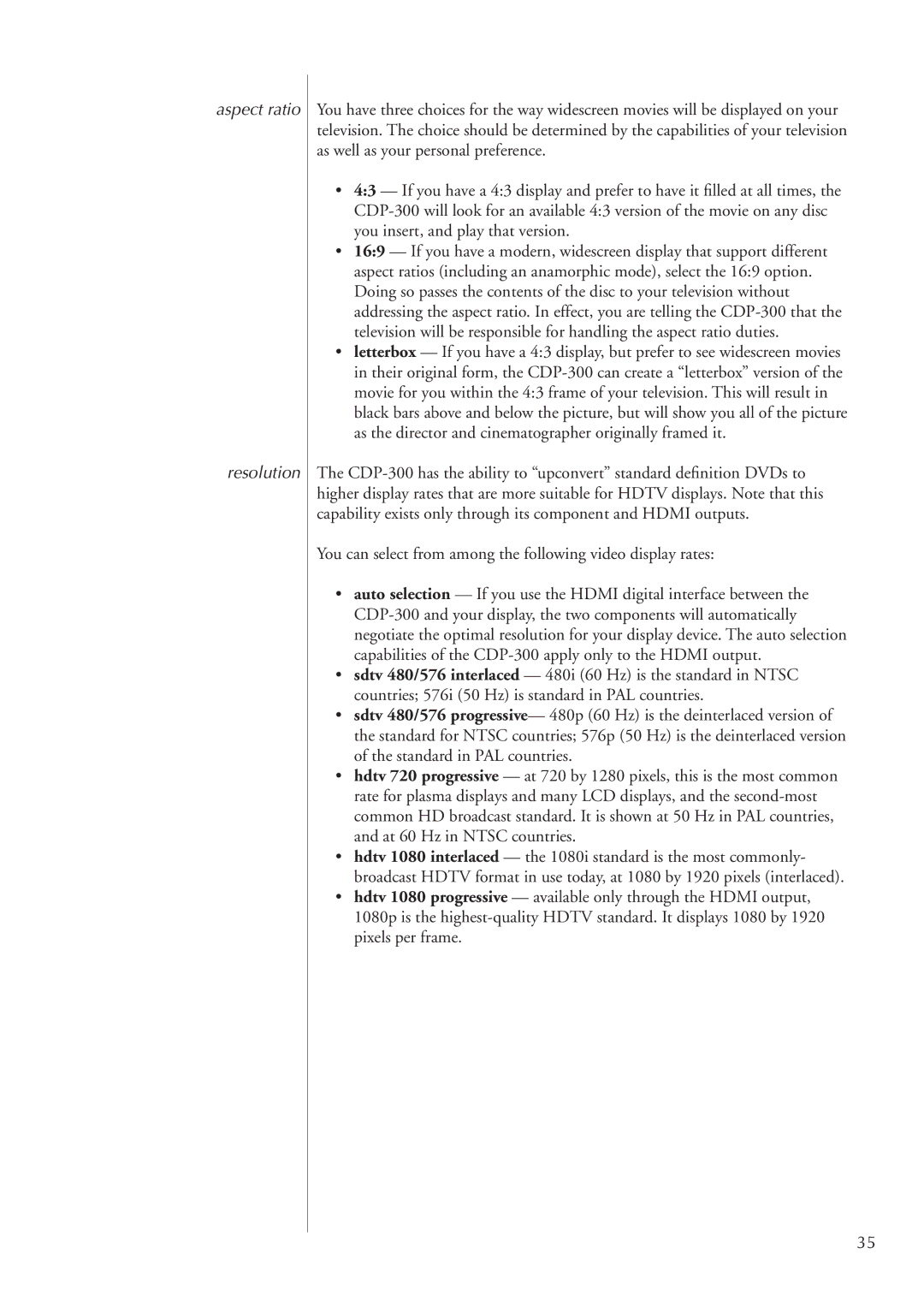aspect ratio
resolution
You have three choices for the way widescreen movies will be displayed on your television. The choice should be determined by the capabilities of your television as well as your personal preference.
•4:3 — If you have a 4:3 display and prefer to have it filled at all times, the
•16:9 — If you have a modern, widescreen display that support different aspect ratios (including an anamorphic mode), select the 16:9 option. Doing so passes the contents of the disc to your television without addressing the aspect ratio. In effect, you are telling the
•letterbox — If you have a 4:3 display, but prefer to see widescreen movies in their original form, the
The
You can select from among the following video display rates:
•auto selection — If you use the HDMI digital interface between the
•sdtv 480/576 interlaced — 480i (60 Hz) is the standard in NTSC countries; 576i (50 Hz) is standard in PAL countries.
•sdtv 480/576 progressive— 480p (60 Hz) is the deinterlaced version of the standard for NTSC countries; 576p (50 Hz) is the deinterlaced version of the standard in PAL countries.
•hdtv 720 progressive — at 720 by 1280 pixels, this is the most common rate for plasma displays and many LCD displays, and the
•hdtv 1080 interlaced — the 1080i standard is the most commonly- broadcast HDTV format in use today, at 1080 by 1920 pixels (interlaced).
•hdtv 1080 progressive — available only through the HDMI output, 1080p is the
35
